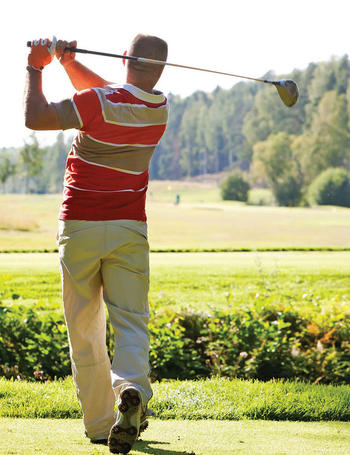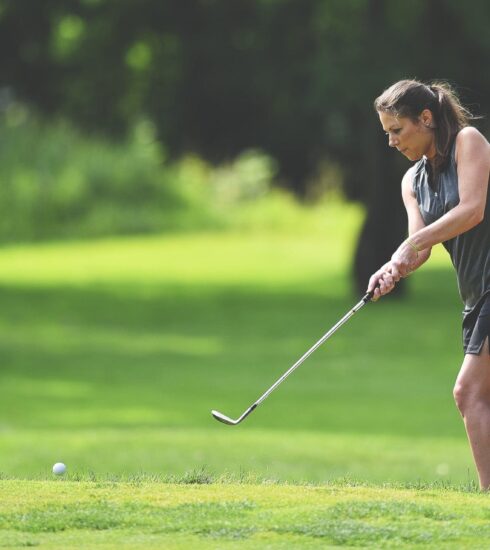Putting Tips
Think about the game of golf. Your ball spends most of its time on the ground and very little time in the air. But where does practice time generally go? Driving, hitting long irons, wedges, etc. Putting is often overlooked and golfers pay for it later with a three-putt here and a missed 2-footer there. Making putting a priority in your game will save you strokes.
Lining Up Essentials
People don’t take the time to truly investigate their line before they putt. Commonly, how you are lined up for a putt can make the difference between making it and missing it. Next time you line up for a putt, take two extra clubs with you. Line one club off of your ball so that it’s pointing at the cup. Stand over the ball and take your other club and line it up off your toes. If you’re lined up correctly, that club off your toes should run exactly parallel to the club coming off your ball toward the target. This is what is known as lower body alignment. You also want to align your shoulders. If you have a third club, bend both your elbows and set the club in there. The club you have in your arms should be parallel to the club running from your ball and the club running in front of your feet.
Keeping Eyes on Line
When you crouch over your putt, you should be able to plumb bob off your forehead and land it right on the ball. When you are lined up exactly over the ball, you’ll hit the sweet spot in your putter more often and your putts will go exactly where you are aiming. If you aren’t directly over your ball, it could be a problem with putter length. Using a putter that’s too long or too short will either put you too far away from the ball, or have you hanging over it too far. To check and see if you are over your ball, place a CD under your ball (preferably one that you don’t listen to very much). If you can see your eyes in the CD, you are over the ball.
Use Your Non-Lead Hand
There’s a relationship between your non-lead hand and the face of your putter. The non-lead hand is the hand that is farthest from the hole. If you can develop a better understanding of how the non-lead hand works with the face of the putter, your putting game will improve. Legendary golfer Jack Burke Jr. used a ball-rolling technique to help bridge the gap and make the art of putting easier. To practice this, simply get three or four balls, establish a target (this can be on a green or on carpet) and practice rolling the ball toward the target with your non-lead hand. Your movement should be fluid and the ball should roll at a consistent speed toward the target. You’ll also notice that the wrist break on the ball release is very similar to that of the putting motion.





